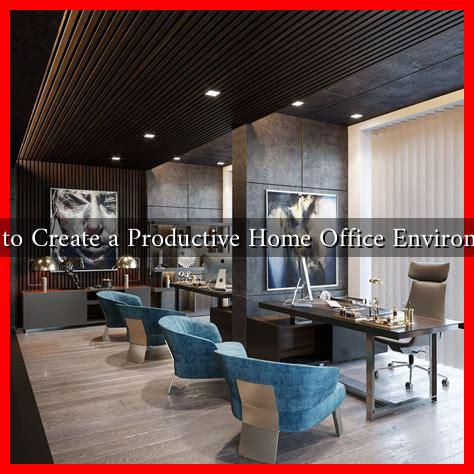-
Table of Contents
How to Create a Productive Home Office Environment
In recent years, the trend of remote work has surged, prompting many individuals to establish home offices. A productive home office environment is crucial for maintaining focus, enhancing creativity, and ensuring overall job satisfaction. This article explores essential strategies to create an effective workspace at home, supported by research and practical examples.
Understanding the Importance of a Dedicated Workspace
Creating a dedicated workspace is vital for separating work from personal life. According to a study by Stanford University, remote workers can be more productive than their in-office counterparts, but only if they have a designated area for work. A well-defined workspace helps in:
- Minimizing distractions
- Enhancing focus and concentration
- Establishing a routine
By having a specific area for work, individuals can mentally prepare for their tasks, leading to increased productivity and efficiency.
Choosing the Right Location
The location of your home office plays a significant role in its effectiveness. Here are some tips for selecting the ideal spot:
- Quiet Area: Choose a location away from household noise and distractions.
- Natural Light: Opt for a space with ample natural light to boost mood and energy levels.
- Comfortable Temperature: Ensure the area is well-ventilated and maintains a comfortable temperature.
For instance, a study by the University of Exeter found that natural light can increase productivity by up to 15%. Therefore, positioning your desk near a window can significantly enhance your work experience.
Investing in Ergonomic Furniture
Comfort is key to maintaining productivity during long work hours. Investing in ergonomic furniture can prevent physical strain and improve focus. Consider the following:
- Ergonomic Chair: A chair that supports your back and promotes good posture.
- Adjustable Desk: A desk that allows you to alternate between sitting and standing.
- Monitor Stand: A stand that positions your screen at eye level to reduce neck strain.
According to the Occupational Safety and Health Administration (OSHA), proper ergonomics can reduce the risk of musculoskeletal disorders, which are common among remote workers.
Minimizing Distractions
Distractions can severely hinder productivity. Here are some strategies to minimize them:
- Set Boundaries: Communicate with family members about your work hours to minimize interruptions.
- Use Noise-Canceling Headphones: These can help block out background noise, allowing for better concentration.
- Limit Digital Distractions: Use apps like Freedom or Cold Turkey to block distracting websites during work hours.
A case study by the American Psychological Association found that employees who manage distractions effectively report higher job satisfaction and productivity levels.
Incorporating Personal Touches
While maintaining professionalism is essential, personalizing your workspace can enhance motivation and creativity. Consider adding:
- Artwork: Inspirational quotes or artwork that resonates with you.
- Plants: Indoor plants can improve air quality and boost mood.
- Personal Items: Photos or mementos that bring you joy.
Research from the University of Queensland indicates that personalizing your workspace can lead to increased job satisfaction and a sense of belonging.
Establishing a Routine
Creating a structured daily routine can significantly enhance productivity. Here are some tips for establishing an effective routine:
- Set Regular Work Hours: Stick to a consistent schedule to create a work-life balance.
- Take Breaks: Incorporate short breaks to recharge and maintain focus.
- Plan Your Day: Use tools like Trello or Asana to organize tasks and set priorities.
A study by the Harvard Business Review found that employees who take regular breaks are more productive and less prone to burnout.
Conclusion
Creating a productive home office environment is essential for remote workers seeking to maximize their efficiency and job satisfaction. By choosing the right location, investing in ergonomic furniture, minimizing distractions, incorporating personal touches, and establishing a routine, individuals can significantly enhance their work experience. As remote work continues to evolve, prioritizing a conducive workspace will be key to achieving professional success and personal well-being.
For more tips on optimizing your home office, consider visiting Forbes.


